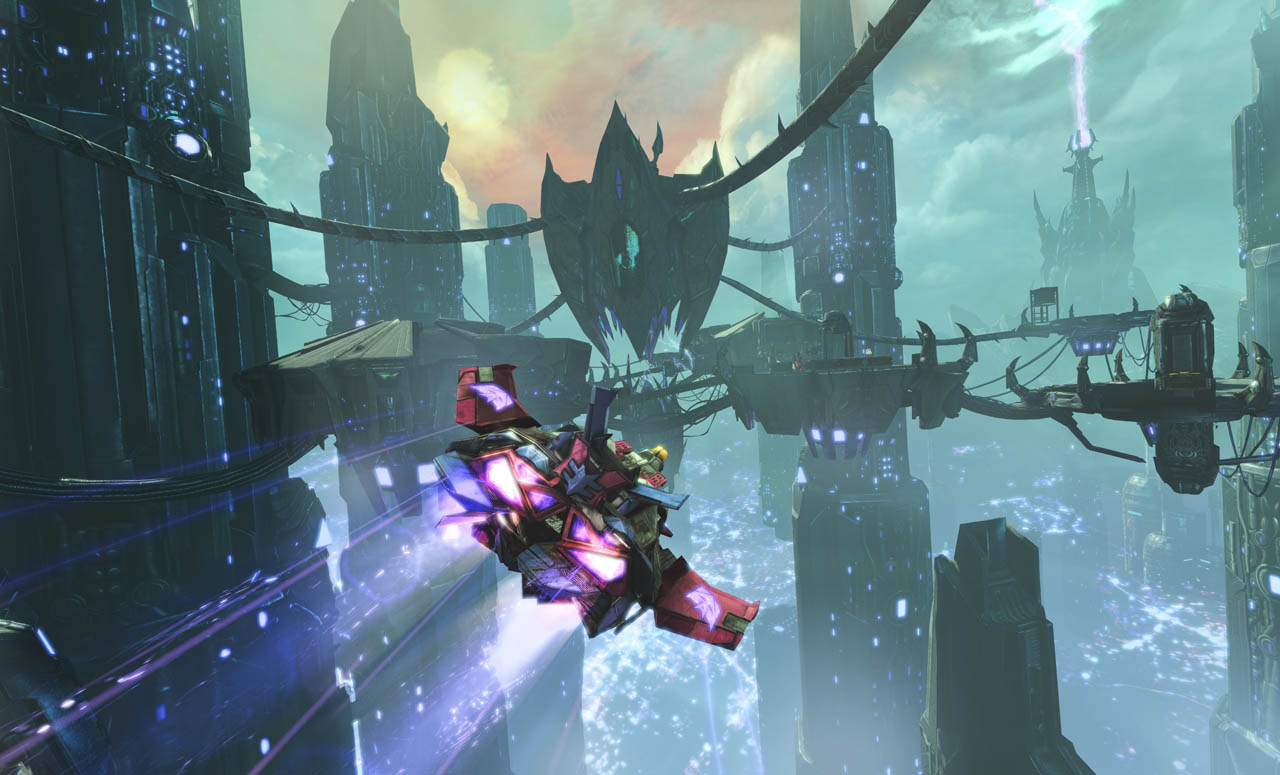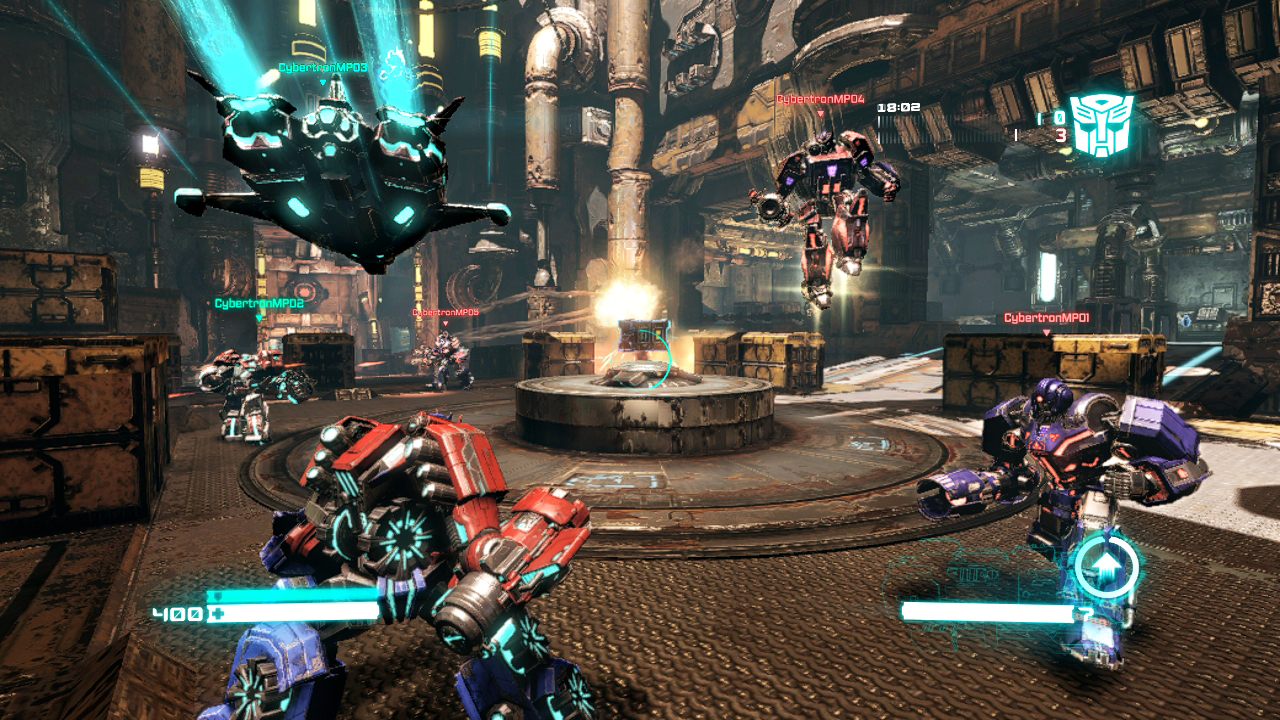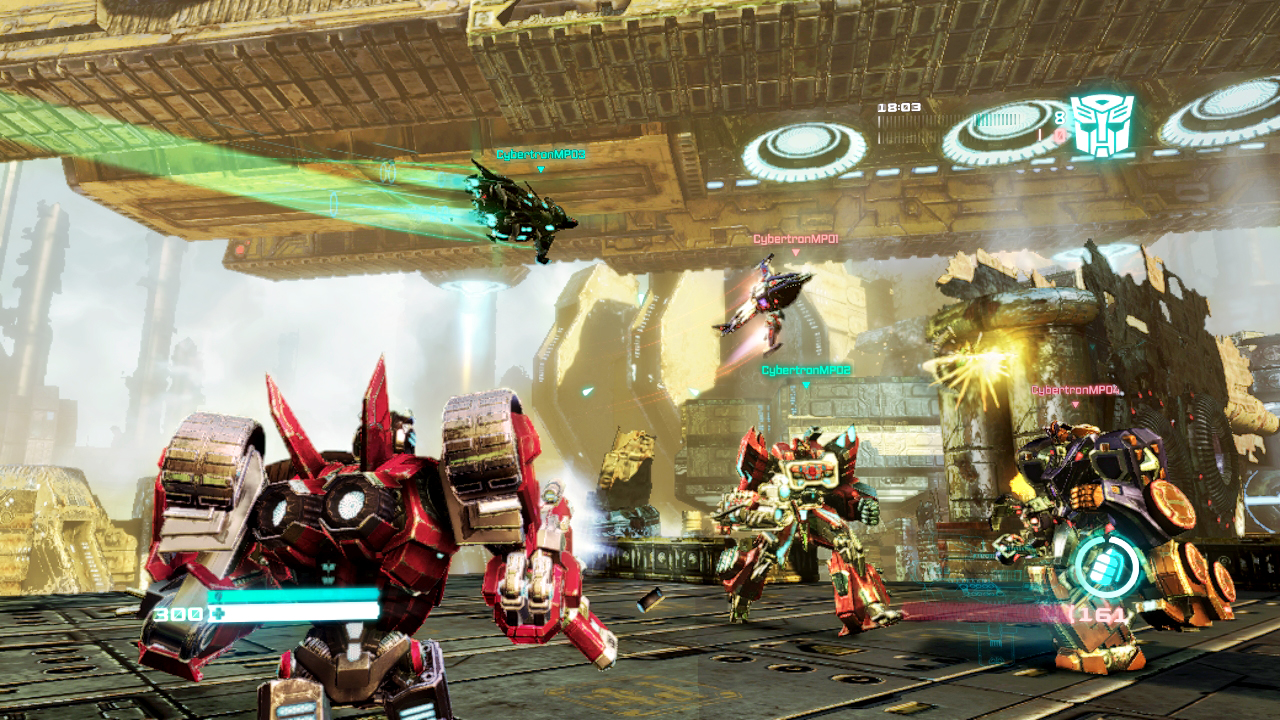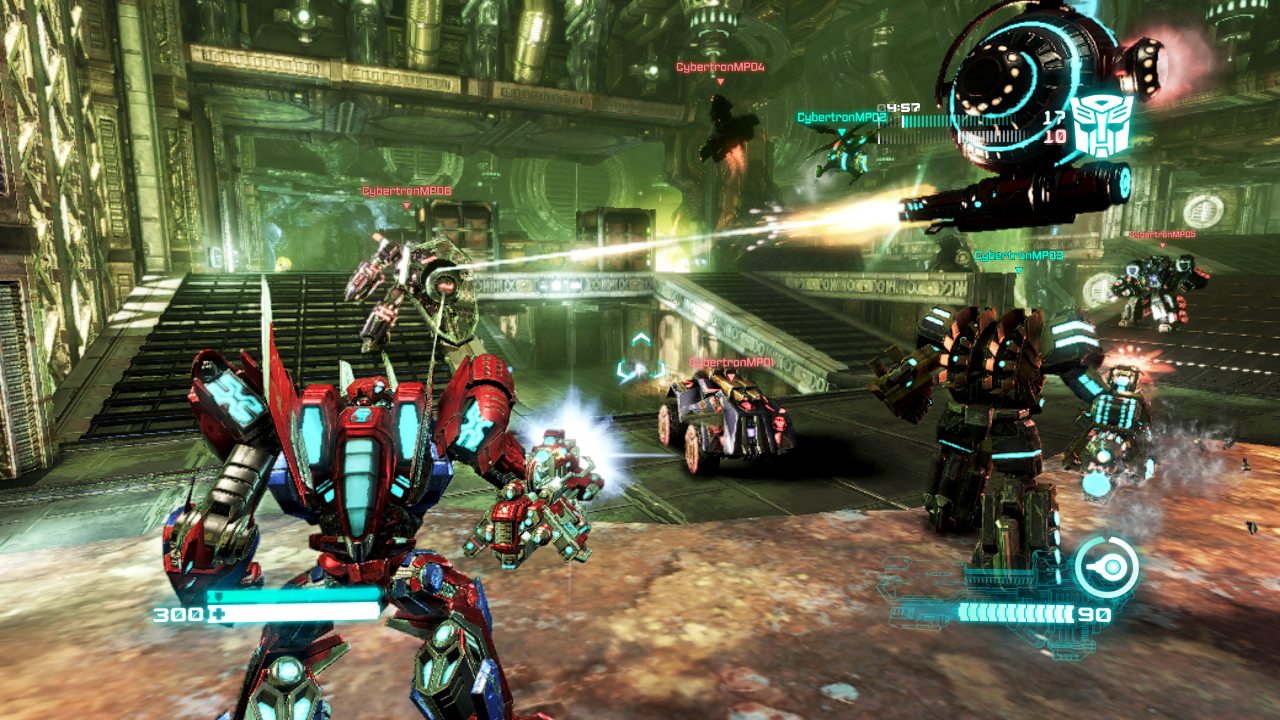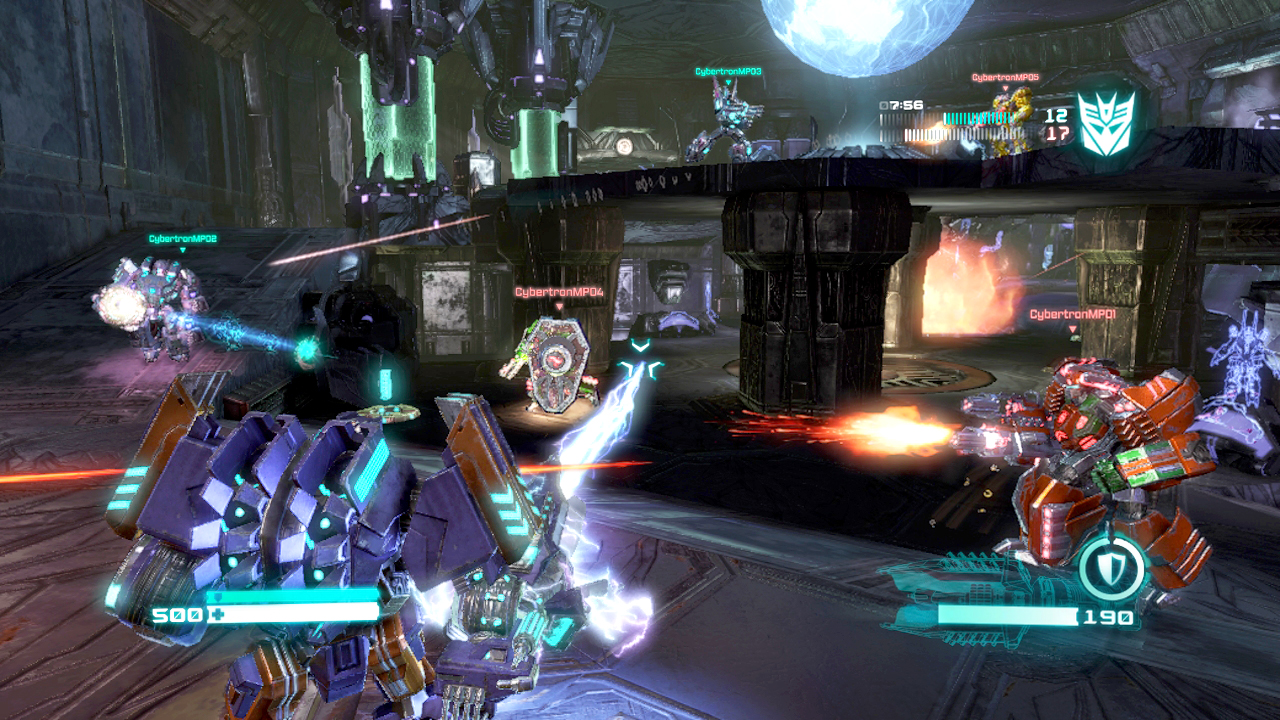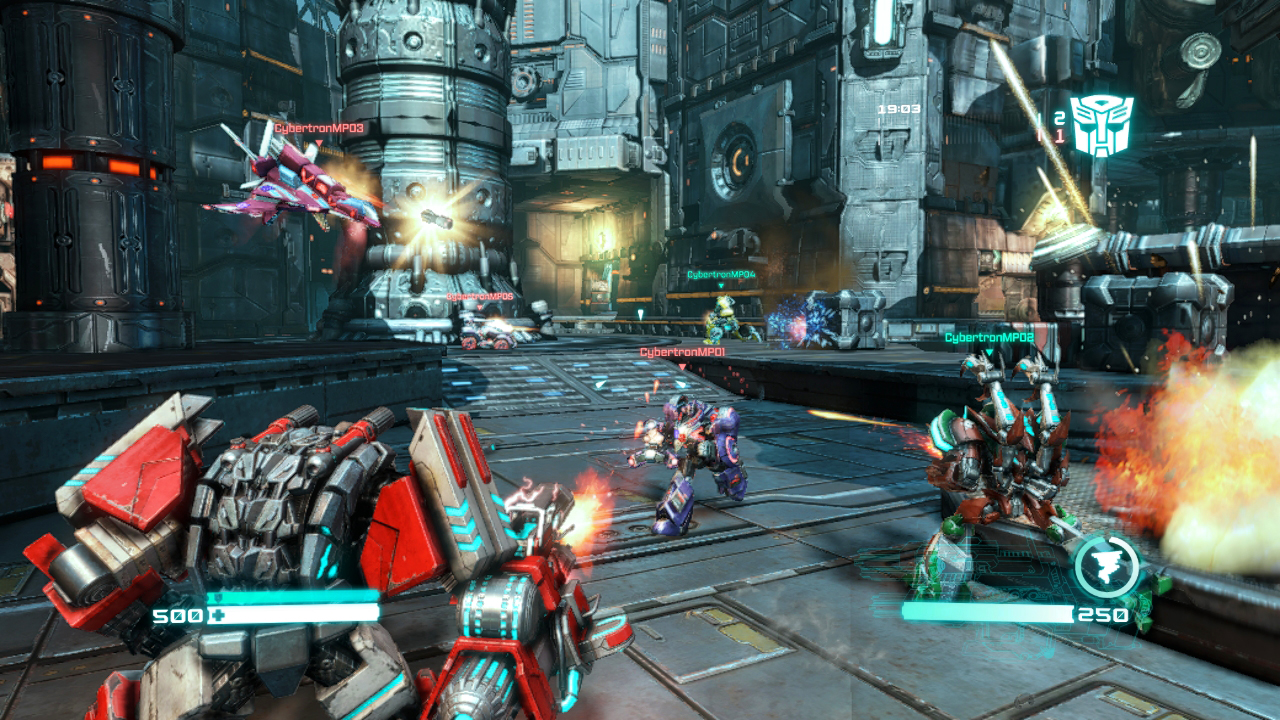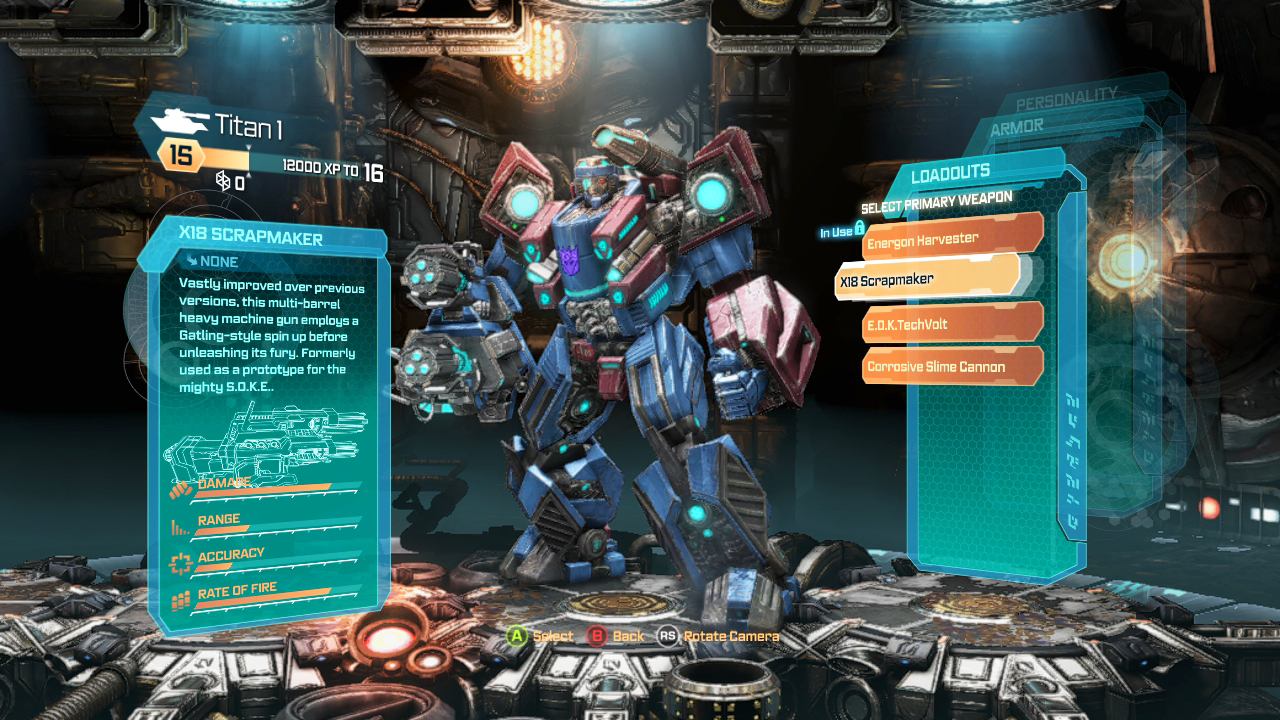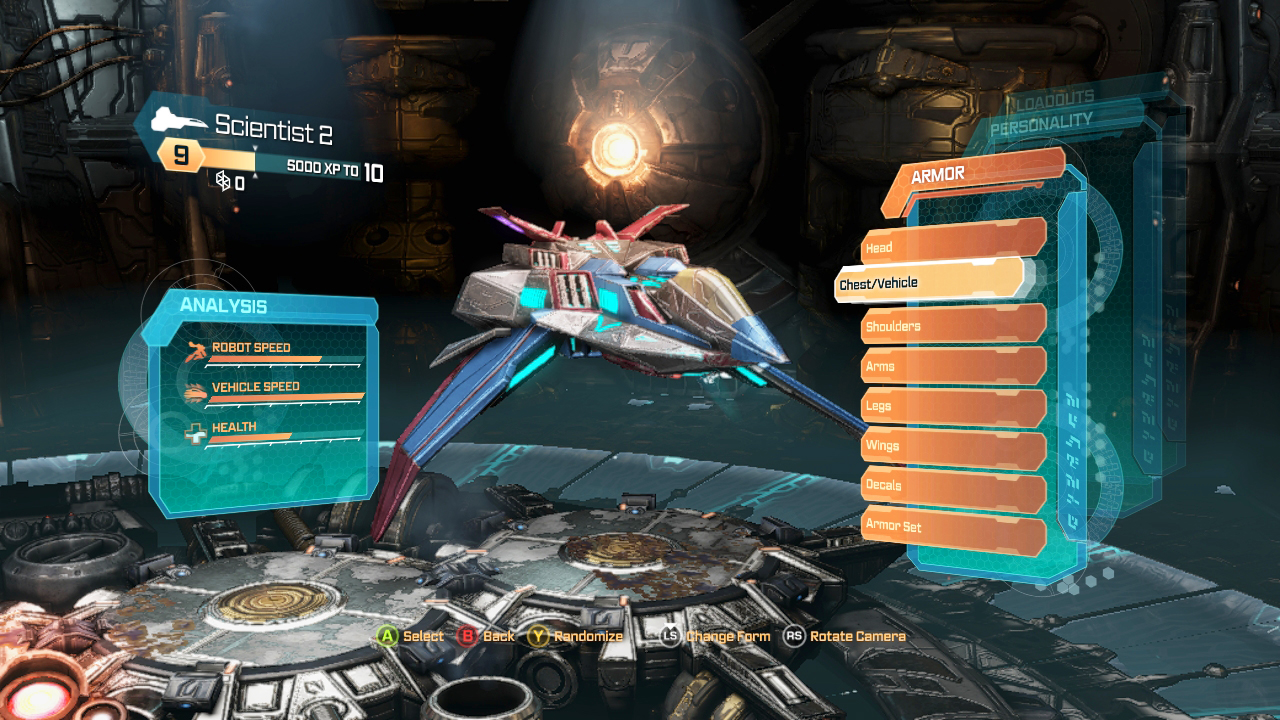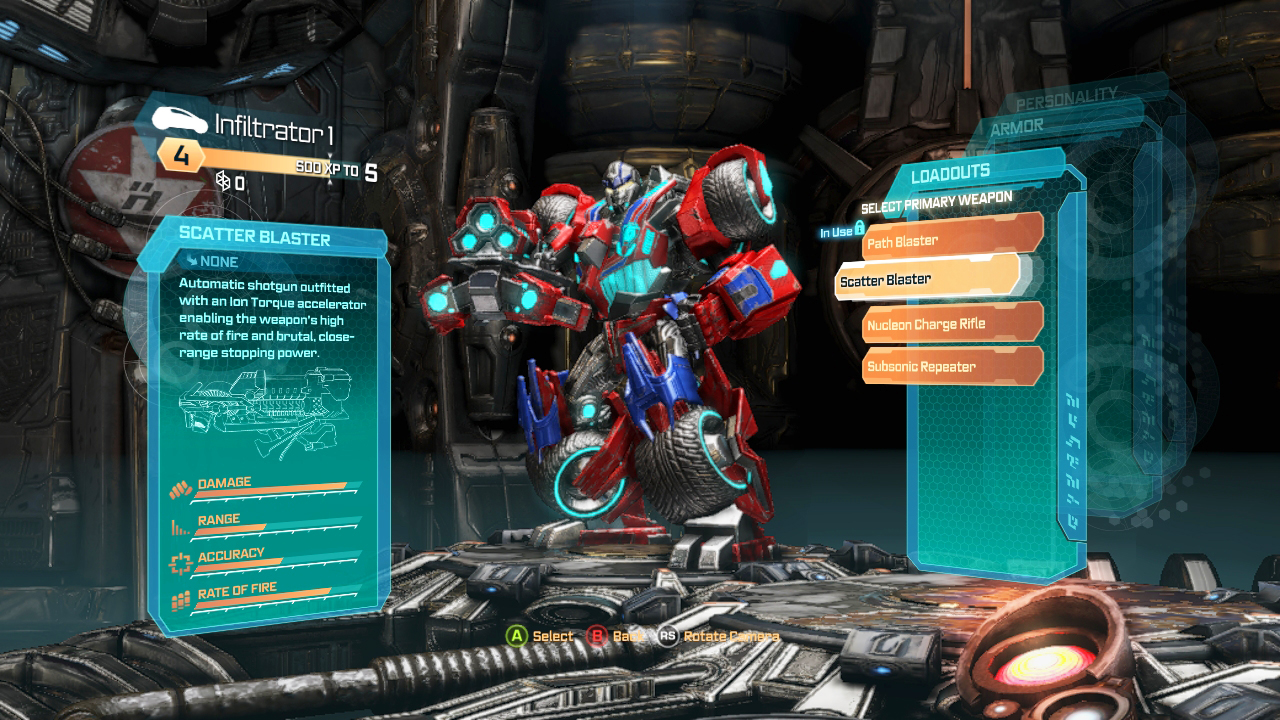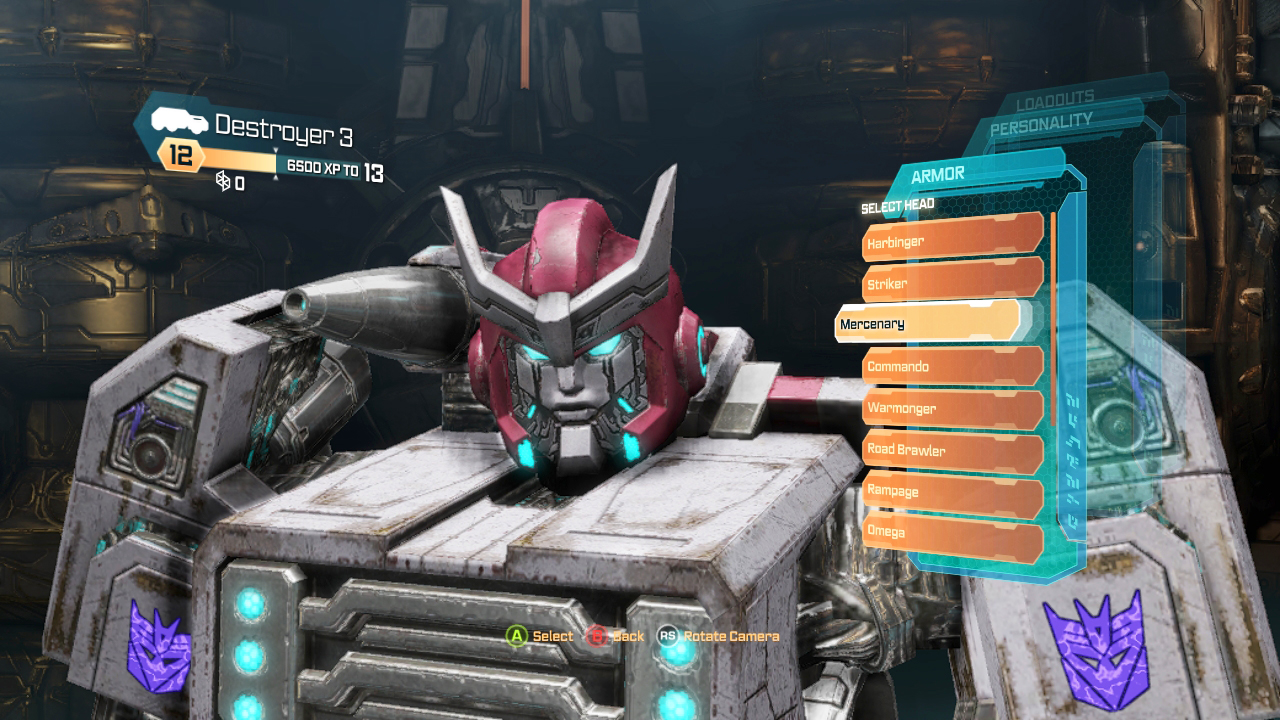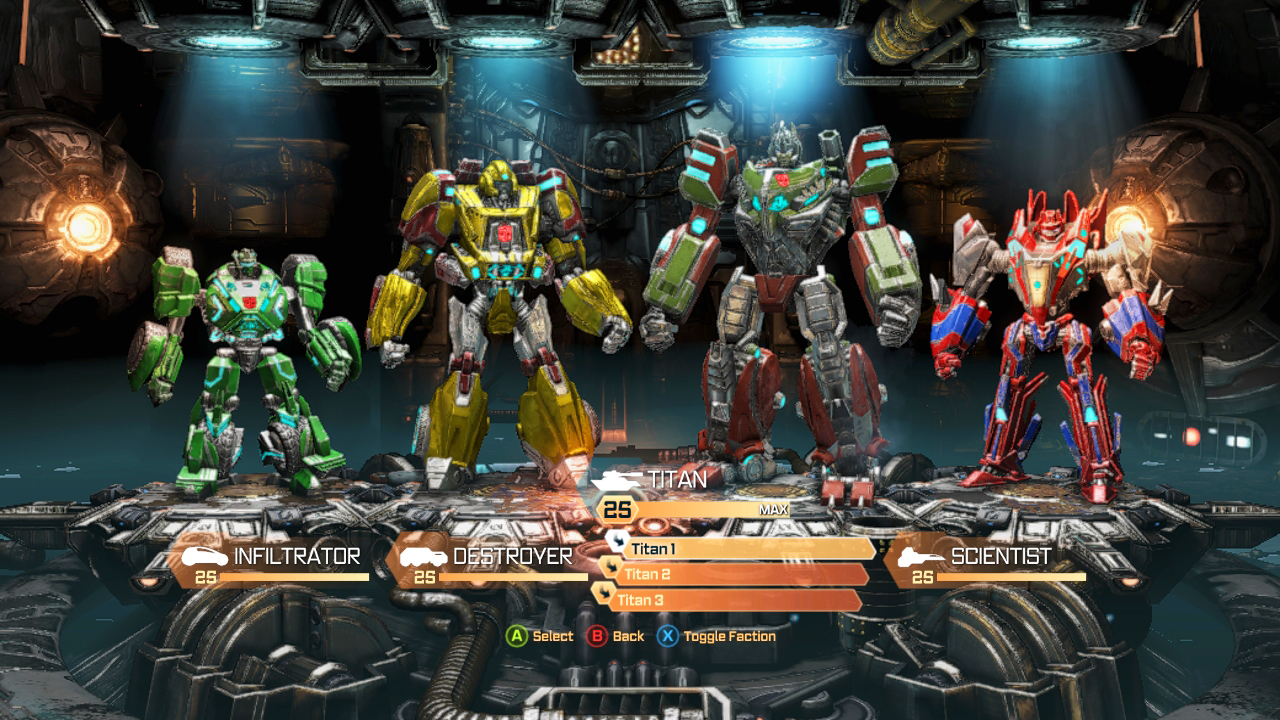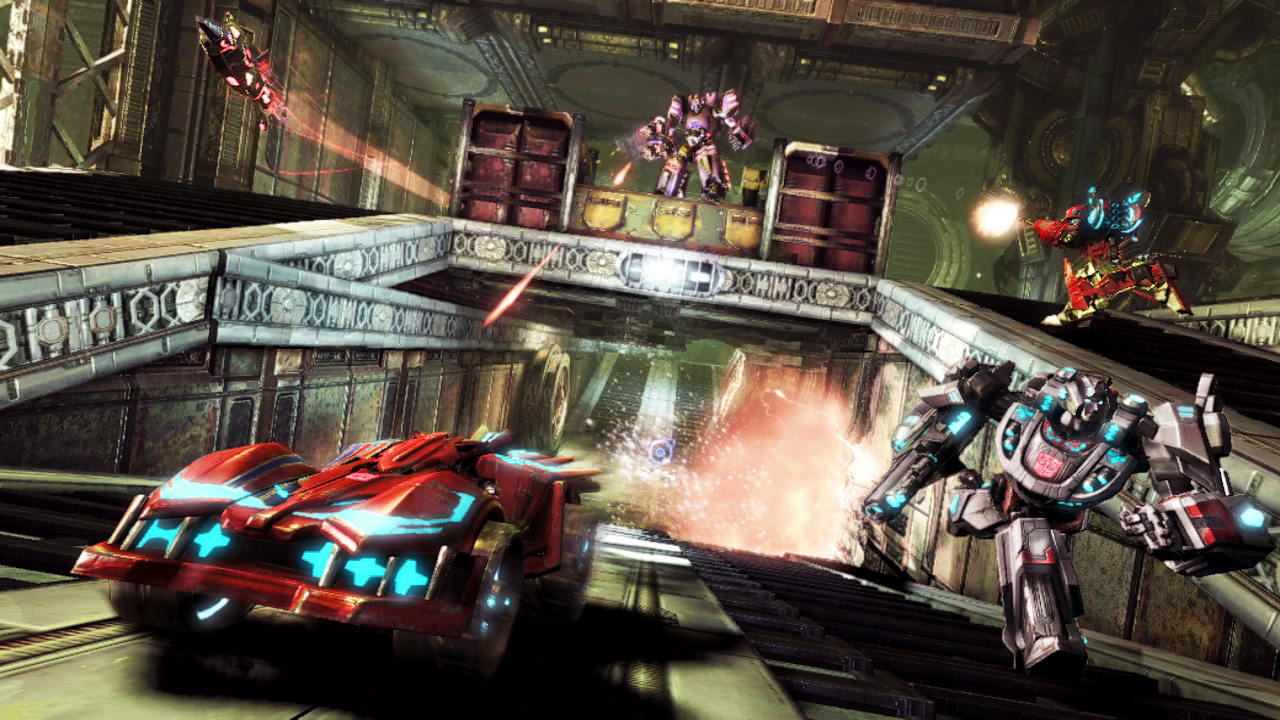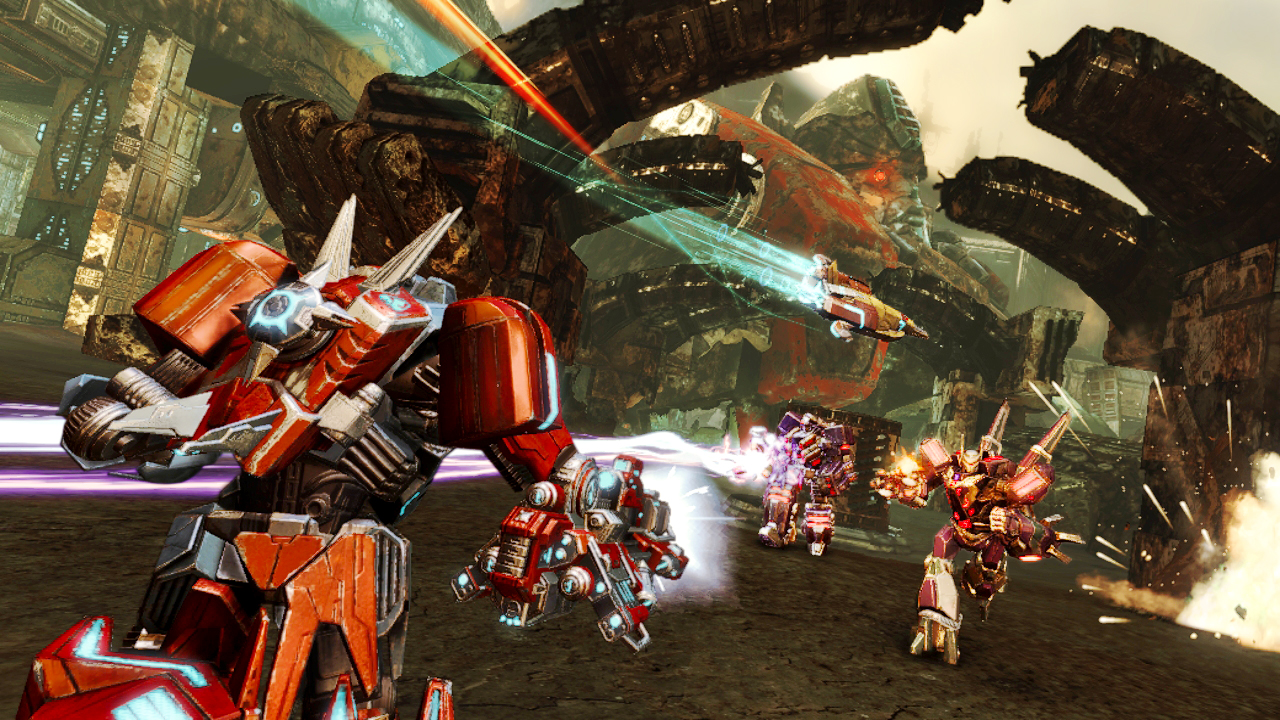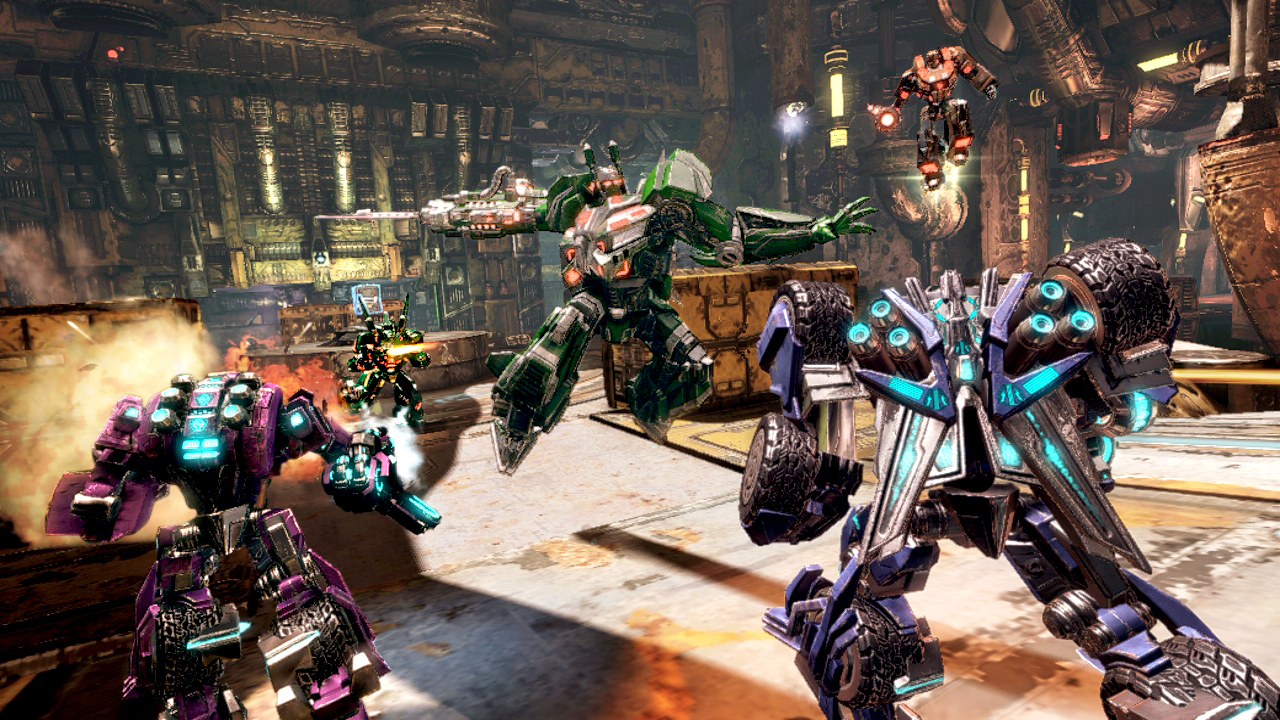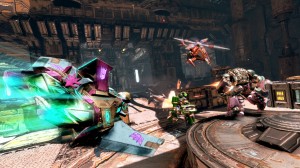 The Transformers franchise is a wonderful anomaly. Like many other toylines, it could be satisfied with creating the flimsiest of backstories and merchandising tie-ins to sell more toys to children. Yet, for two and a half decades, the creators of Transformers have tried to make a coherent storyline with a mythology that seeks to resolve all of its different incarnations into one overarching plot. At its worst, it’s crushed under the Unicron-sized weight of its own lengthy history. At its best, we get works like High Moon Studios’ Transformers: Fall of Cybertron.
The Transformers franchise is a wonderful anomaly. Like many other toylines, it could be satisfied with creating the flimsiest of backstories and merchandising tie-ins to sell more toys to children. Yet, for two and a half decades, the creators of Transformers have tried to make a coherent storyline with a mythology that seeks to resolve all of its different incarnations into one overarching plot. At its worst, it’s crushed under the Unicron-sized weight of its own lengthy history. At its best, we get works like High Moon Studios’ Transformers: Fall of Cybertron.
Fall of Cybertron, a direct sequel to 2010’s War for Cybertron, continues the tale of the civil war of the Autobots and Decepticons. Both are seeking to escape Cybertron, which is now unable to sustain life. Each level allows players to take control of several Transformers as the narrative demands, switching factions and playstyles as frequently as Starscream switches loyalties. By fluidly using the large cast of characters in the Transformers canon, High Moon Studios has created a can’t miss title for fans of Transformers and a fun sci-fi romp for shooter fans.
The biggest knock on Fall of Cybertron is that it doesn’t innovate in any significant way over War for Cybertron. Like many other shooters, levels contain some elements that feel overly scripted and linear. However, the drastically different playstyles of each Transformer keep the game fresh without overstaying their welcome. To use a Transformers toy analogy, there are no redecos here. There are no repackaged Optimus Primes sold as Ultra Magnus. Each level is substantially different from the rest, and the game never feels drawn out.
One interesting addition to the game is the Teletraan I store, where players can outfit their current Campaign character with a custom weapon loadout and/or upgrade their weapons by using shards collected from destroying enemies. This would probably be more interesting on multiple playthroughs or for players who enjoy using lots of different weapons, but I found myself reusing the same few weapons to take advantage of their upgrades. This made the game slightly less interesting, though I admittedly only have myself to blame. Being able to use any weapon discovered throughout the game offers a level of customization that other games lack without making the experience too homogeneous.
Sadly, the co-op campaign and choice of character present in War for Cybertron were tossed to the wayside in Fall of Cybertron, ostensibly to better take advantage of each character’s unique abilities. To High Moon’s credit, the game does feel more refined and varied as a result. After all, controlling the giant monstrosity of Bruticus and stomping legions of Autobots offers a stark contrast to sneaking around with the relatively tiny Cliffjumper. Still, I can’t help but wish that High Moon Studios would have included even a superficial co-op mode where two players can play as clones of the same character ala Dead Rising 2.
To continue the theme of refinement with limitations, multiplayer threw out several of War for Cybertron’s playlists, leaving Team Deathmatch, Conquest (like Call of Duty’s Domination), Capture the Flag, and Escalation (like Gears of War’s Horde Mode) to join the new Headhunter mode. Headhunter mode is Team Deathmatch with the added wrinkle of having to deposit defeated enemy sparks at a “node” location to score points. Overall, multiplayer mechanics are straightforward, and I had no notable difficulties finding a game or playing with others. However, fans of Horde Modes of other games will be disappointed with Escalation’s easy difficulty and lack of variety. There’s not much to do after completing it a few times.
Multiplayer drastically improves upon the previous class system of War for Cybertron, expanding on the Create a Character idea by providing many more abilities and loadouts. They all still start from the same four bases: Infiltrators, Destroyers, Titans, and Scientists (for the sake of simplicity, they’re analogous to Scouts, Soldiers, Heavys, and Medics from TF2 respectively). However, many more “perks” can be added in the forms of different parts and weapons. War for Cybertron was light on the different types of builds, but Fall of Cybertron allows players much more customization until they reach level 25, where they can start again, much like prestiging in Call of Duty.
There’s not much to dislike about Fall of Cybertron. It’s an improvement over its previous game in every way except the lack of a co-op campaign. The Transformers have plenty of personality and banter and are all true to their toy and cartoon models. High Moon’s war-torn Cybertron perfectly conveys the dire straits of the Transformers Civil War. The story is well-written and includes plenty of fanservice for Transformers fans (including a certain song during the credits). Newcomers to the franchise will be somewhat confused by the large amount of characters, but not to the point where it will significantly inhibit enjoyment.
It’s slightly disappointing that the game didn’t take more risks or truly strike out with its unique property, but there’s something to be said for a highly refined game that makes few mistakes and uses its source material well. Fans of unrealistic shooters should find enough here to enjoy in both the 8-10 hour campaign and the multiplayer. In fact, I’d be surprised if they didn’t have Optimus Prime’s authoritative voice stuck in their head long after they’ve stopped playing. “Til all are one!”
Gameplay
Graphics
Sound
Overall

